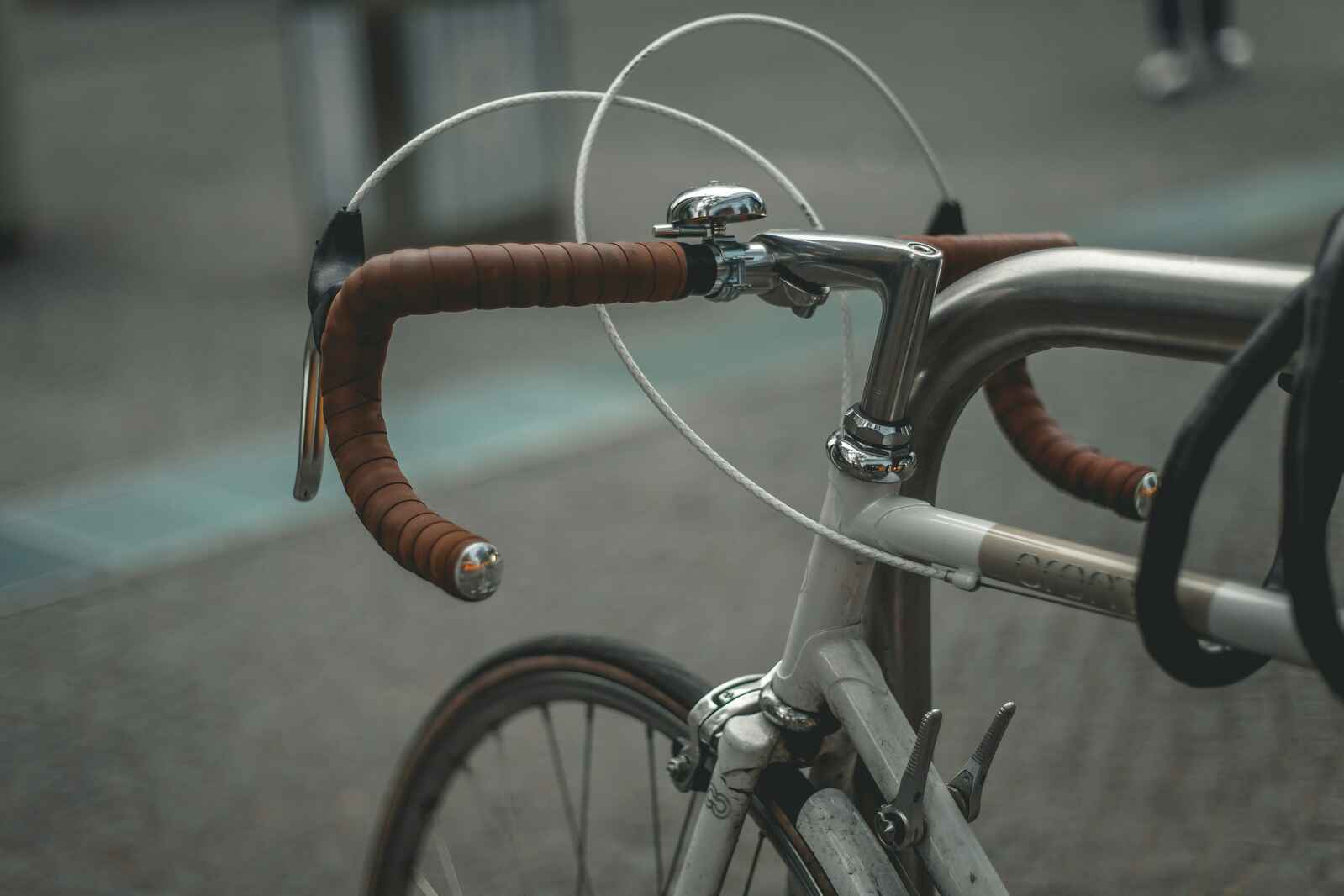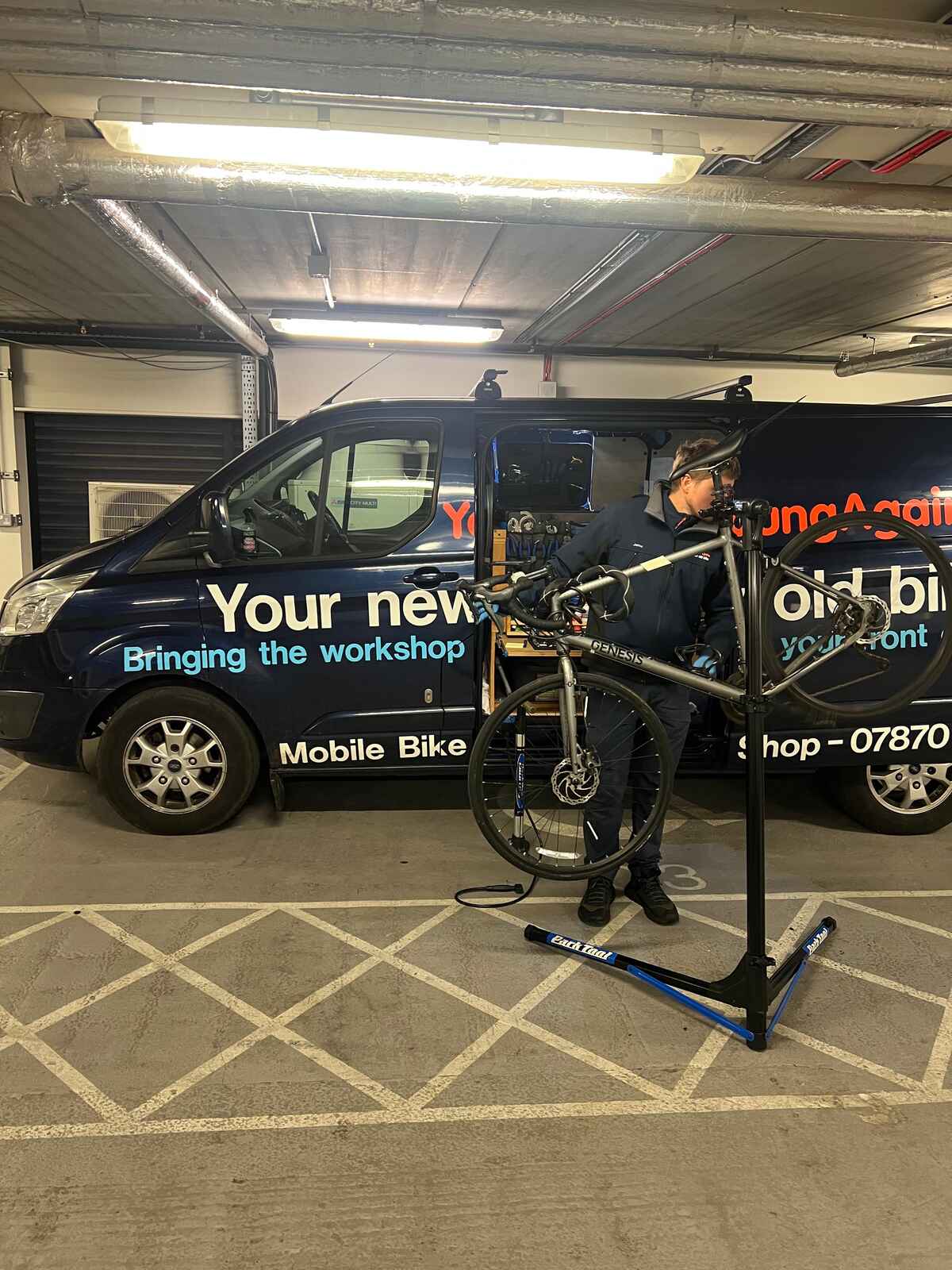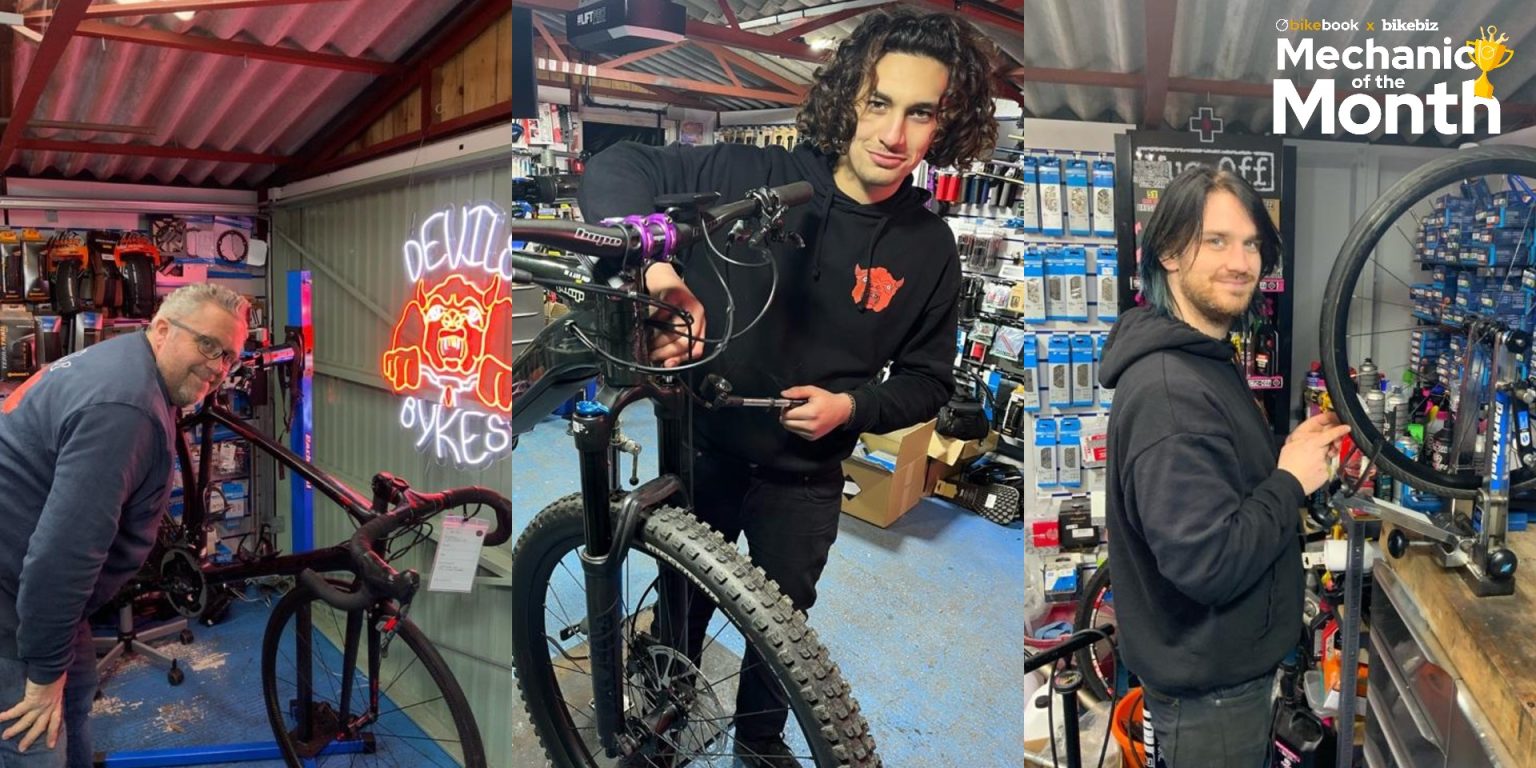December 26, 2025
•
8 minute read
How to Fix Loose Handlebars on a Bike
You've just hopped on your bike for a leisurely weekend ride, only to find your handlebars feel a bit wobbly. Does this sound familiar?
Jake Fieldsend
Founder & CFO
You've just hopped on your bike for a leisurely weekend ride, only to find your handlebars feel a bit wobbly. Does this sound familiar? Loose handlebars are not just annoying—they're a safety hazard, potentially leading to loss of control. Before your next ride, isn’t it worth ensuring your handlebars are securely fixed? Armed with a bit of know-how, you can handle this critical bike maintenance task with ease. Let's explore the specifics of why handlebars become loose and how you can address this common issue.
1. Identifying the Problem with Loose Handlebars
1.1 Why do handlebars become loose?
Understanding the reasons behind loose handlebars is your first step in fixing the problem effectively. Vibration, frequent use, and impacts from riding over rough terrains are usual suspects. They can gradually loosen the bolts that secure your handlebars. Additionally, incorrect initial installation or using the wrong parts can lead to gradual loosening, which is why proper set-up is essential.
- Regular tension checks can prevent unanticipated loosening.
- Improper installation increases the risk of repeat issues.
- Choose appropriate tools for repairs to ensure correct fit and tightness.
Pro-tip: Set a reminder to periodically check the tightness of your handlebar components, especially after intense or frequent rides.
1.2 Signs your handlebars need fixing
When it comes to diagnosing the problem, several tell-tale signs indicate your handlebars might need some attention. If you feel significant movement when applying pressure, it’s a clear signal. Similarly, misalignment, where the handlebars aren't straight with the front wheel, suggests something is awry. Squeaking or other unusual noises could also guide you to investigate further.
- Test by gently pushing on the handlebars; any wobble signals a need for tightening.
- Ride slowly and observe if the handlebars shift relative to the front wheel.
- Listen for unexpected noises that might indicate loose components.
Pro-tip: Perform a quick handlebar test before each ride by gently rocking them while holding the front wheel steady—no movement should occur.
1.3 Safety checks before starting
Before you kick off any repairs, it’s wise to prioritise safety. Ensuring your bike is stable throughout the process can prevent accidental damage or injury. Position your bike on a level surface, preferably using a bike stand. Make sure all necessary tools are within reach to avoid leaving the task halfway, which could risk an incomplete fix and create further safety concerns.
- Use a bike stand to maintain stability.
- Position your bike on a flat, solid surface to avoid tipping.
- Double-check tool availability to complete the repair smoothly.
Pro-tip: Having a checklist of tools and components needed for the task can save time and prevent half-done repairs!
By recognising these indicators and preparing adequately, you're already halfway to a secure ride. Let's ensure your handlebars are tight and dependable, keeping your cycling experience safe and problem-free.
2. Step-by-Step Guide to Fixing Loose Handlebars
2.1 Gathering the necessary tools
Fixing loose handlebars requires a few essential tools. Having the right tools makes the task straightforward and ensures you're not risking further damage. You'll need an Allen key set, a torque wrench, and some threadlocker if connections appear particularly worn or keep loosening.
- Allen Key Set: Vital for most handlebars as they use hex bolts to fasten.
- Torque Wrench: Ensures bolts are tightened to manufacturer specifications, preventing overtightening and potential stripping.
- Threadlocker: Use it on any problematic bolts that repeatedly come loose, providing extra security.
Pro-Tip: Always keep your tools organised in a small bag. Label each tool slot, helping you avoid the frantic search next time something else needs urgent tweaking.
2.2 Tightening the handlebar clamp
Start by ensuring the handlebar clamp is correctly tightened. Often, simply securing the clamp solves the issue of loose handlebars, preventing dangerous rides. Make sure the bike is on a stand or is comfortably upright to avoid unnecessary movements.
- Locate the Clamp Bolts: Found where the handlebars meet the stem, generally using a 4mm or 5mm Allen key.
- Align the Handlebars: Ensure they're properly aligned with your front wheel to avoid any misdirection while riding.
- Check for Even Tightening: Alternate between bolts when tightening, ensuring even pressure across the clamp.
Pro-Tip: After a few rides, double-check the bolts. Vibrations from different terrains might slightly loosen them, especially if you're into mountain biking.
2.3 Adjusting the headset
Adjusting the headset is crucial if tightening the clamp doesn’t solve the problem. A loose headset often results in a wobbling front end, and it can significantly impair handling if overlooked.
- Loosen the Stem Bolts: Use an Allen key to slightly loosen the bolts holding the stem, allowing headset adjustments.
- Tighten the Top Cap: Carefully adjust the top cap bolt located atop the stem. It should be firm but not overtight; this pulls the fork and stem together.
- Re-tighten Stem Bolts: Make sure these are securely fastened after adjusting the top cap, as they're crucial for steer stability.
Remember, if you encounter any resistance or irregular movements even after adjustments, it might be time to replaceheadset bearings. They're inexpensive and often the root of persistent looseness.
Pro-Tip: Listen for any abnormal creaks or noises post-adjustment. These sounds can indicate further issues, like worn-out bearings or misalignment within the headset.
3. When to Seek Professional Help from Bikebook
3.1 Complex issues beyond basic tightening
Sometimes, fixing loose handlebars isn’t as straightforward as grabbing an Allen key and applying a bit of elbow grease. Persistent issues like frequent loosening or difficulty maintaining alignment can signal deeper problems. These might include worn threads in the stem bolts or a more serious underlying issue with the bike's headset or fork.
In these cases, reaching out for professional help can save you a lot of time and frustration. A bike technician can offer detailed diagnostics to determine if any components need replacing or realignment. More complex issues often require specialised tools and expertise that go beyond your typical home toolkit.
Pro-tip: If your handlebars continue to loosen after you've tightened them properly, consult with a professional to ensure your bike components are not compromised.
3.2 Finding a local mechanic with Bikebook
Are you tired of scouring the internet for a trustworthy bike mechanic nearby? Bikebook is a fantastic way to find local professionals who can handle the tougher tasks. Instead of guesswork, our platform lets you search and compare bike service professionals effortlessly, ensuring you receive high-quality and budget-friendly options.
With Bikebook, you can:
- Search by location: Enter your postcode to find nearby mechanics.
- Compare options: Browse reviews and pricing to choose the best fit.
- Book easily: Schedule an appointment with just a few clicks, cutting down on time-consuming calls.
- Support local talent: By choosing a local mechanic, you contribute to your community's economy.
Bikebook is all about making your life easier, ensuring that finding a technical expert for your bike woes is as simple as a few clicks.
Pro-tip: For the smoothest service experience, read customer reviews on Bikebook before choosing your mechanic to avoid any unpleasant surprises.
3.3 Benefits of professional bike servicing
Investing in professional bike servicing is more than just a last resort; it’s a proactive step towards maintaining bike longevity and performance. Regular servicing helps catch problems early, refining bike components for optimal efficiency. Professional servicing not only improves safety but also enhances your cycling experience by ensuring everything runs smoothly.
Key benefits of professional servicing include:
- Extended lifespan: Regular maintenance checks catch potential issues early, prolonging bike life.
- Enhanced performance: Adjustments made by professionals tune your bike for peak performance.
- Safety assurance: Professionals ensure all components function safely, reducing risk during rides.
- Expert advice: Get personalised tips from experts who understand your bike's make and model.
Utilising professional services means you're prioritising your safety and that of others around you. If you're looking for peace of mind and the best experience on two wheels, professional servicing is well worth considering.
Pro-tip: Schedule regular maintenance checks, even when your bike seems fine, to keep it in top-notch condition.
In conclusion, while fixing loose handlebars can often be a do-it-yourself project, don’t hesitate to reach out to professionals via Bikebook when problems become persistent or require specialised skills. Trusting professional servicing to resolve complex bike issues not only ensures your ride remains safe and enjoyable but also prolongs your cycling companion’s life. For those stubborn mechanical woes or to find a local expert, visit Bikebook for a seamless solution to all your bike servicing needs.
Frequently Asked Questions
How do I tighten my bike handlebars?
To tighten bike handlebars, locate the stem bolts connecting the handlebars to the bike frame. Use an Allen key to tighten these bolts evenly. Make sure to align the handlebars with the front wheel before tightening fully.
How do you fix wobbly bike handlebars?
Fix wobbly handlebars by checking the handlebar clamp bolts for tightness. If the wobbling persists, inspect the headset for looseness, which might need tightening with a headset wrench.
How do I stop my bike handlebars from moving?
Prevent movement by ensuring the handlebar clamp is properly secured. Tighten both stem bolts evenly and check that the headset is correctly adjusted, as a loose headset can cause excessive handlebar motion.
How to fix a loose cycle handle?
For a loose cycle handle, start by tightening the stem bolts with an appropriate wrench. Ensure the handle is aligned with the wheel and check the headset for any looseness, tightening it if necessary.



